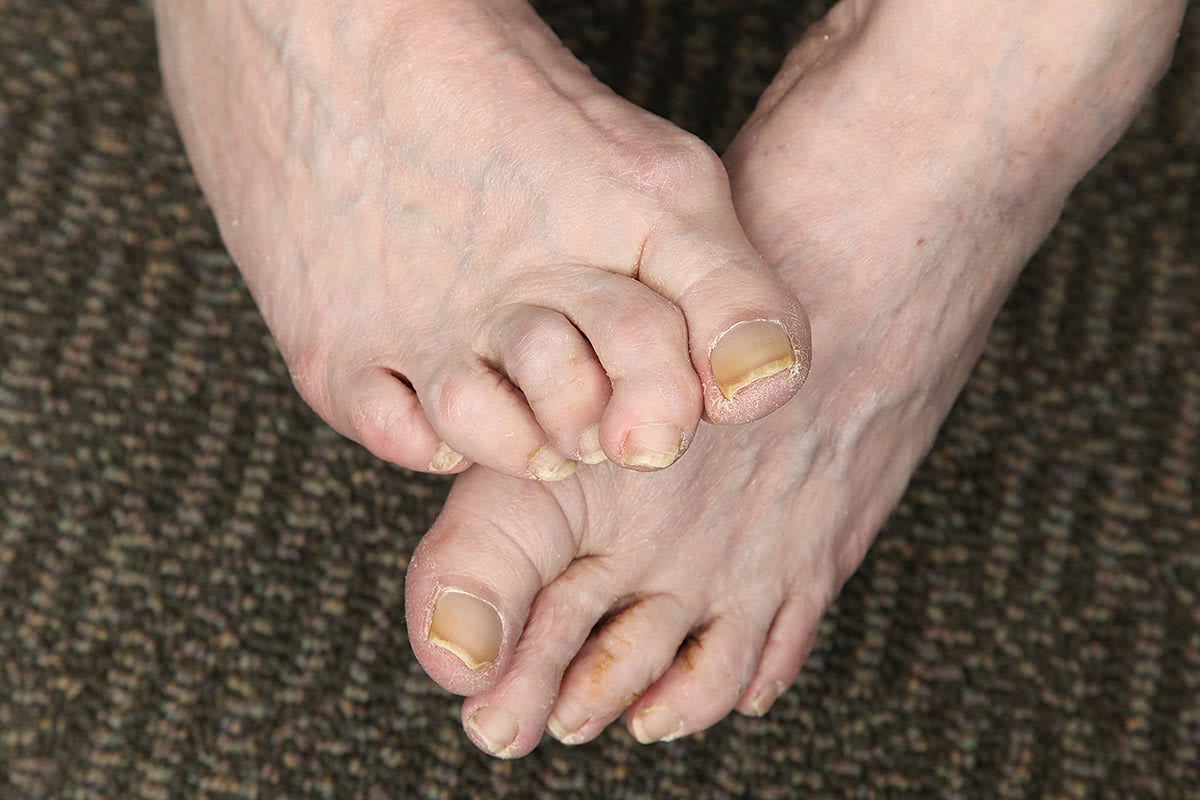Introduction
Claw toe and hammer toe are two separate but similar conditions, although they are often confused.
With claw toe, the toes are bent into a claw shape. This can occur from birth or can develop later in life. The appearance is due to the rear toe joints pointing up and the front joints (nearest the toenail) pointing down.
Claw toes are termed either ‘flexible’ or ‘rigid’, depending on whether the joint is able to move.
Hammer toe on the other hand is where the middle and last joints in the toes become abnormally bent down. A 'mallet toe' describes where the joint closest to the toenail is affected. Hammer and mallet toes often develop gradually over time. Hammer toe affects women more than men and becomes more prevalent with age.

Causes
Claw toe
The direct cause of claw toe is a muscle imbalance whereby the small muscles in the foot are overpowered by the long muscles coming from the leg. Factors that may cause this include…
- Ankle injury (especially where there is nerve damage and / or inflammation).
- Rheumatoid arthritis.
- Cerebral palsy.
- Diabetes.
- Stroke.
- Charcot-marie-tooth disease (an inherited condition affecting the nervous system).
- Plantar plate injury under the ball of the foot.
In some cases no cause is readily identifiable.
Hammer toe
The direct cause is the same as with claw toe, i.e. a muscle/tendon imbalance. In addition to the factors listed for claw toe, hammer toe can also be caused by...
- Wearing shoes that are too tight.
- Naturally having a longer toe.
- An inherited predisposition to the condition.
- Previous injury to the toe or foot.
Symptoms
Claw toe will sometimes (although not always) be painful and in some cases calluses and/or corns and/or ulcers may develop where there is pressure when wearing shoes.
Symptoms of hammer toe are similar, although there may also be inflammation of the toe and in severe cases open sores may appear. People with hammer toe may also experience difficulty walking.
Tests / Diagnosis
Tests to diagnose either claw toe or hammer toe involve an assessment of symptoms and a physical examination and manipulation of the foot and toes. The doctor will also need to check for any of the underlying condition which may be causing the claw/hammer toe. X-rays may also be required to view the bone structure.
Non-Operative treatment
Claw and hammer toes can often be managed without surgery. A podiatrist can help you implement treatments such as:
- Pads or dressings to protect rubbing areas
- Silicone sleeves or to spacers.
- Ring toe props or taping.
- Extra depth, extra width shoes to accommodate the deformity.
